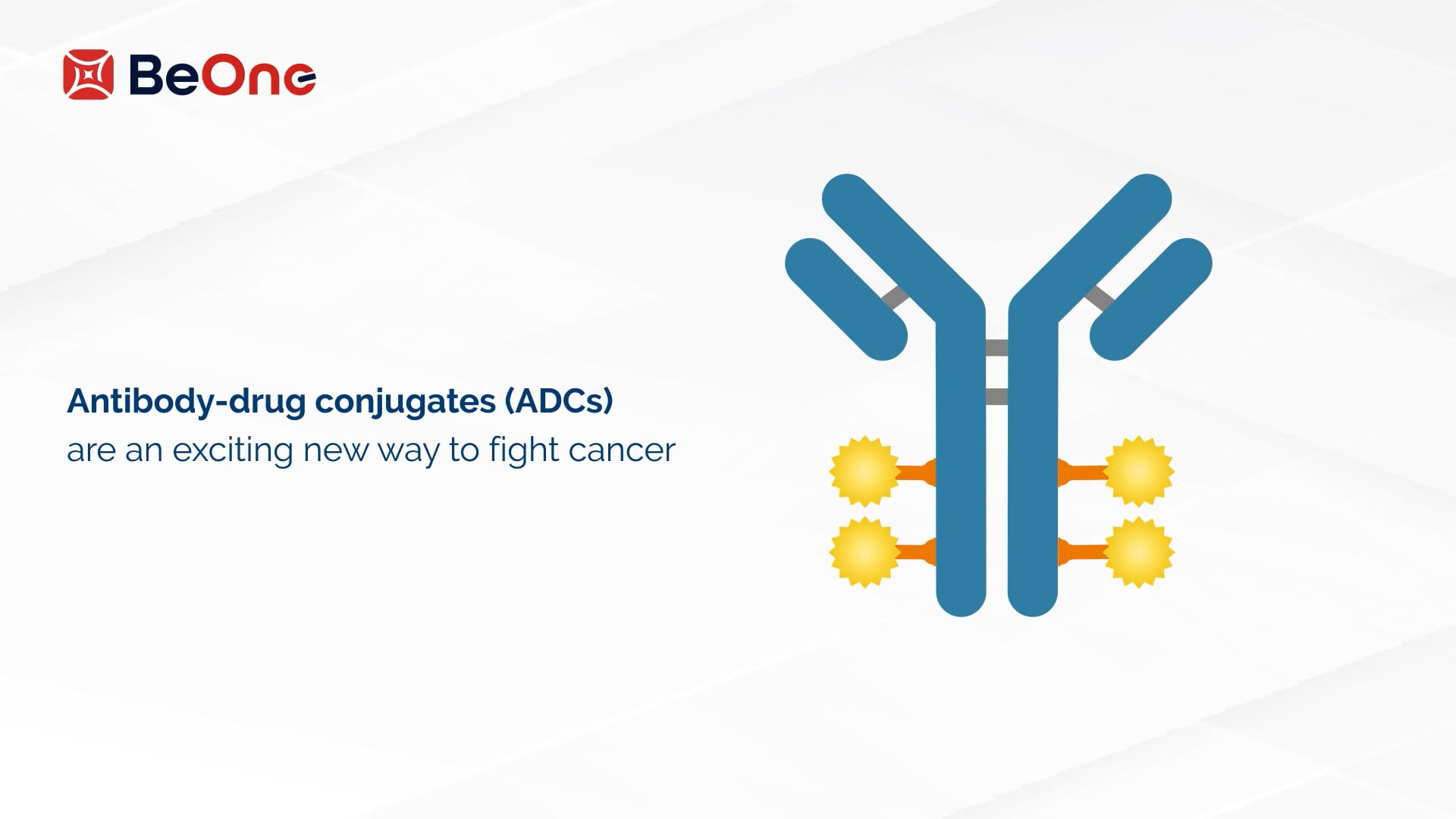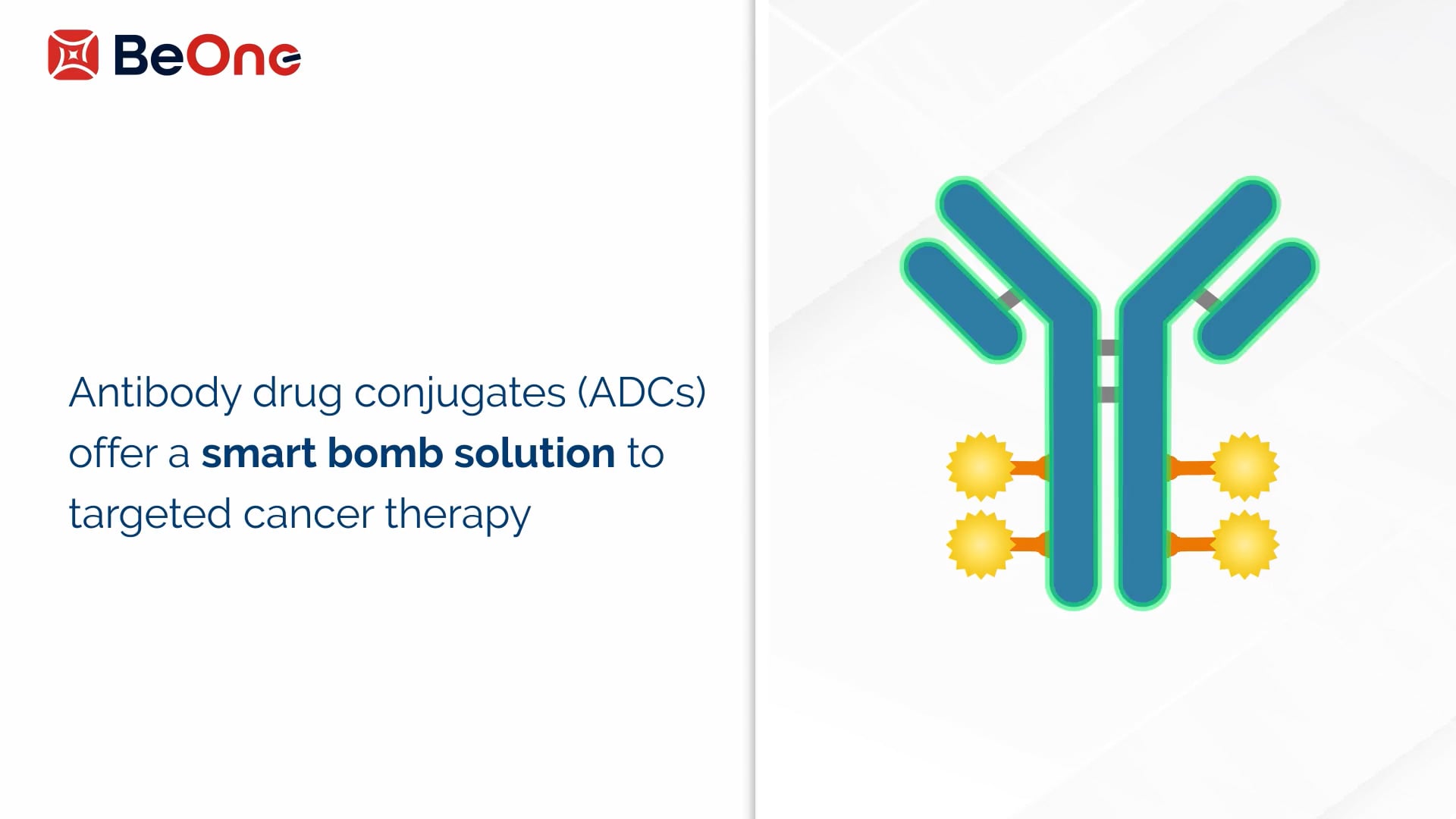Targeting Cancers with Enhanced ADCs
How do ADCs work?
Like a precision-guided missile, ADCs use an antibody as a targeting agent. Each ADC’s antibody component is engineered to recognize a specific cancer target like a lock and key. Unlike most antibody therapeutics, which rely on the immune system for anti-tumor efficacy, an ADC carries its cell-killing payload with it. When the ADC’s antibody finds its target, the cancer cell internalizes the ADC, releasing the toxic payload and causing the targeted tumor cell to die.

Enhancing ADCs with technology innovations
At BeOne we are building on the decades of foundational learnings in the industry with our own deep discovery research expertise to create the next generation of enhanced ADCs across multiple tumor types. Technology innovation in all aspects of the ADC molecule allows us to generate promising new ADCs tailored to specific indications. For example, we employ multispecific antibody frameworks to incorporate the latest innovations in tumor targeting. We are deploying a range of proprietary payloads, from small molecule inhibitors targeting key biology pathways to innovative degraders and conditionally active prodrugs. Our novel linker chemistry is designed to allow a high amount of payload loading on ADCs and to ensure precise release of the payload to the targeted tumor cells. Furthermore, we achieve site-specific, stable attachment of the payload drug to the antibody with a tunable drug-to-antibody ratio, optimized for each ADC.

In-house ADC manufacturing fueling progress
Integrating these technological advancements and refining candidate molecules through an iterative discovery research and validation process are what makes each investigational ADC uniquely suited to its intended development path. Hand-in-hand with innovations in ADC design, we have established in-house manufacturing capabilities for our enhanced ADC technologies. This infrastructure streamlines production of experimental ADCs for research testing and evolution as well as providing ready scale-up for preclinical validation, clinical, and ultimately commercial activities.
